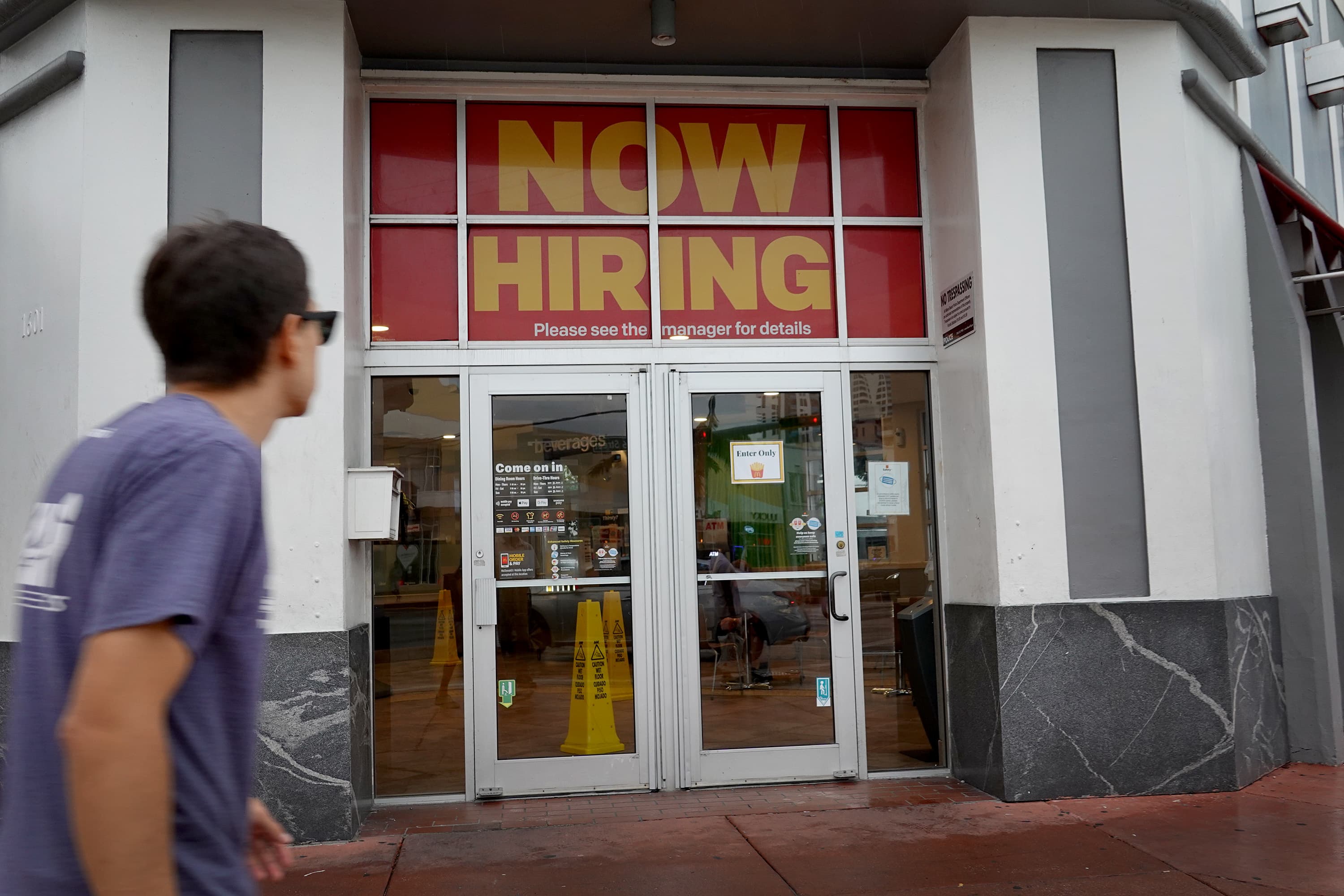The number of long-term unemployed fell by 136,000 in November, continuing a downward trend since early 2021 as the economy and labor market have rebounded.
However, the decrease was the smallest since April, when long-term unemployment fell by 35,000 people.
Long-term unemployment is a period of joblessness that lasts more than six months. It’s a financially precarious time for individuals, who generally by then no longer qualify for unemployment benefits. It may also cause lasting damage like lower future wages or more difficulty finding a job.
The number of long-term unemployed can drop for “good” reasons (people finding a job) or “bad” reasons (people getting discouraged by job prospects and discontinuing their search for work).
Evidence suggests November’s decline was for “good” reasons, a positive development, according to Nick Bunker, economic research director for North America at the Indeed Hiring Lab.
The labor force grew, as did the share of employed Americans relative to the overall population, according to the November jobs report, issued Friday. Both suggest more people found jobs last month, Bunker said.
The unemployment declines were also broad-based.
“The fact we saw declines in unemployment across different durations of unemployment was good to see,” Bunker said. “If this was concentrated just among people out of work only a few weeks, I think that wouldn’t be as good.”
About 2.2 million Americans remain long-term unemployed — about 1.1 million more than in February 2020, according to the U.S. Bureau of Labor Statistics.
More from Personal Finance:
How to get the free at-home Covid tests promised by White House
How to avoid a tax bomb when selling your home
More than $87 billion in federal benefits siphoned from unemployment system
Roughly 32% of all unemployed Americans have been out of work more than six months. That share is significantly lower than the 43.4% pandemic-era peak in March.
However, aside from the Great Recession, the share in November remains higher than any other period since record keeping began in 1948.
Confusing jobs report
Broadly, the November jobs report was a confusing one for economists.
On one hand, there were many noteworthy developments.
The U.S. unemployment rate dropped to 4.2%, the lowest since February 2020, when it was 3.5%. (As noted earlier, the drop seems to be for “good” reasons.)
It was partly driven by a decline in total temporary layoffs, which fell below 1 million for the first time during the pandemic as employers recalled furloughed workers, according to Daniel Zhao, a senior economist at career site Glassdoor. Permanent layoffs also fell below 2 million for the first time since March 2020, he said.
On the other hand, overall job growth fell short of expectations. Payrolls increased by 210,000 in November, less than half what Wall Street expected. It was the slowest rate of growth all year, Zhao said.
The mismatch — a rosy unemployment outlook but disappointing job growth — may seem at odds.
But it’s a function of how officials tabulate the U.S. jobs report, according to economists. Unemployment and jobs figures come from two different surveys, of households and employers, respectively.
“If I saw just the household survey this morning, I would’ve been ecstatic,” Bunker said. “If I were to have just [the employer survey], I’d be pretty bummed out.”
There’s usually some variation, but this degree of divergence is anomalous, Bunker said.
Why the divergence?
The Bureau of Labor Statistics reports payroll figures with a seasonal adjustment, which is meant to control for annual labor patterns like holiday hiring. Some economists think that adjustment, which has been complicated by Covid-related labor distortions, may be masking otherwise robust growth.
Without that adjustment, employers reported adding 778,000 jobs. That’s 568,000 more jobs than the seasonally adjusted figure would suggest.
“So we might be seeing a seasonal adjustment that is geared toward much more holiday season hiring than [is] currently occurring,” according to Michael Farren, an economist and senior research fellow at the Mercatus Center at George Mason University.
“Remember, [seasonal adjustments] were made for comparison to other similar years,” he added. “This means that the sky might not be falling after all.”
The federal government has also revised recent jobs figures significantly upward in subsequent months, which may occur in November, economists said.
